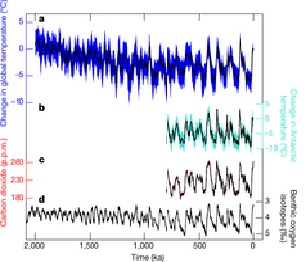Uncategorized
-

A post on Facebook this morning reminded me that it is time to start thinking about fall frosts and freezes. Fortunately from a frost perspective, the next few weeks look like they will be above normal in temperature so we are likely to see a later than average date for the first frost, but even…
-

Among the impacts that Hurricane Matthew had on the Southeast coast were some impacts that the surge had on historical sites in the area. There are a number of forts in the area, many of them along the coast or just inland along rivers that were also affected by rising storm surges. Here are a…
-

Did you know that you can use cricket and katydid chirps to estimate the temperature? Dolbear’s Law is the formula from the late 19th century that can be used to accurately estimate the temperature based on the number of chirps a cricket emits. Basically, crickets chirp faster when it is warm than when it is…
-

The US Environmental Protection Agency has announced the release of a new Adaptation Resource Center for looking at the impacts of climate change in the US. You can find it at https://www.epa.gov/arc-x. According to the web site, EPA’s Adaptation Resource Center (ARC-X) is an interactive resource to help local governments effectively deliver services to their communities even…
Posted in: Uncategorized -

All eyes among my meteorologist friends as well as many others are on the tropics as Hurricane Matthew moves north through the Bahamas today headed towards the Southeast. If you live within 100 miles of the coast, I hope you have made preparations for the storm, which is likely to be the worst that most…
-

Above-normal temperatures continued in Georgia for a fourth straight month in September. Departures from normal temperature were even higher in September than in August. The hottest areas were in the northwestern half of the state where no cooling relief from tropical storm rain and clouds occurred. Tropical storms Hermine and Julia provided much needed rainfall…
-

A new study in Nature magazine describes a new very-long-term temperature record assembled by a scientist at Stanford University from 61 different proxy climate records. Proxy records are climate records based on things like tree rings, ocean sediments and ice cores which change depending on climate factors like temperature. The new record shows temperatures for…